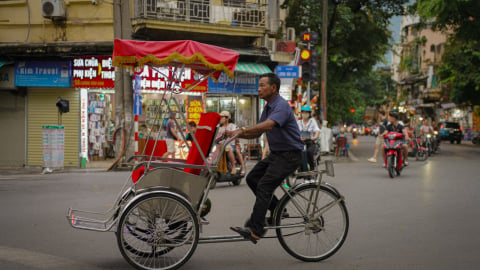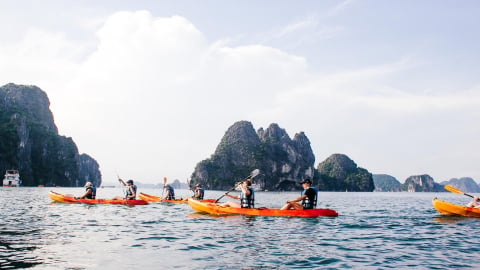The booming wave of international tourism from India is reshaping the tourism map of Asia - Pacific. Thanks to the rise of the middle class, increased spending power and the desire to explore new cultures, Indian tourists are becoming a "gold mine" that any country is eager to exploit. To catch up with this trend, many destinations have proactively changed policies, simplified visa procedures, increased air connectivity and diversified services.
Easing visa requirements is seen as the most effective strategy to increase the attractiveness of Indian tourists. Countries like Thailand, Malaysia, and Sri Lanka have been quick to adopt visa-free policies, with the Philippines being the latest to join the race. According to Aditya Tyagi, founder of travel company Luxe Escape, the significant increase in Indian outbound travel to Asia-Pacific is largely due to the eased visa procedures.

Outbound tourism is booming in India, and Asia-Pacific destinations are making efforts to attract this influx of visitors with simplified visa policies, increased air connectivity and diversified service offerings.
Mr. Tyagi emphasized that countries that have recently adopted this policy have witnessed impressive growth. Typically, the Philippines recorded a 25-30% increase in Indian visitors immediately after the announcement of visa exemption. This shows that a liberal visa policy not only facilitates procedures but also acts as a strong psychological incentive, encouraging Indian tourists to plan international trips.

Faced with the rapid growth of the Indian tourism market, many Asian destinations such as Thailand, Malaysia, and Sri Lanka have exempted visas for Indians to take advantage of exploiting this source of visitors.
Countries are not just waiving visa requirements, they are also making efforts to simplify the online visa application process. Australia is a prime example. According to Prateek Wadhwa, director of Dreamtrip4U, simplifying the online visa application process has given Indian tourists more confidence in planning their trip to Australia, and his company has seen a marked increase in the number of visitors. Being able to complete the process quickly and transparently from home has helped remove psychological and administrative barriers, boosting Indians’ decision to travel.

Additionally, Indian travelers are increasingly looking for rich cultural experiences, adventure activities, cuisine and even sporting events in the Asia-Pacific region.
Apart from the visa factor, improved air connectivity is also playing a major role in boosting tourism. New direct flights are opening up unprecedented opportunities. Mr. Sunil Kumar, President of the Association of Indian Travel Agents, commented that the improvement in direct flights between India and Vietnam is increasing the interest of both the leisure and MICE (meetings, incentives, conferences and exhibitions) segments in the S-shaped country. Recently, new direct flights have been added, connecting Hyderabad and Bengaluru with Ho Chi Minh City, which is expected to boost the number of visitors between the two countries.

According to Mastercard Economic Institute's Travel Trends 2025 Report, Indian travelers are exploring a more diverse range of destinations
The growth of the Indian tourism market is also accompanied by a change in the preferences of tourists. The Mastercard Economic Institute's Travel Trends 2025 report shows that Indian tourists are exploring a wider variety of destinations. Thanks to the rise of the middle class and direct flights, destinations such as Hanoi, Bali and Abu Dhabi are becoming top choices.
Indian tourists are not just looking for traditional tours but also crave for rich cultural experiences, adventure activities, unique cuisines and even sporting events.

The growth of Indian tourists has created positive impacts and pushed tourism businesses to change to adapt. Vietnam is a typical example of this potential. After the first 8 months of 2025, India has risen to become the 7th largest source of international visitors to Vietnam tourism, with more than 443,000 visitors, achieving an impressive growth of 142.2% over the same period last year. This figure shows that Indian tourists are increasingly favoring Vietnam, and visa policies and flight expansion have contributed significantly to this success.
The growing demand for travel among Indians has also prompted domestic travel companies to expand their operations to the international market. Sriharan Balan, CEO of Madura Travel Service (India), said the company is planning to open an office in Sydney (Australia) to meet demand and ensure service quality. The recruitment of drivers and guides who speak Tamil, a common language in southern India, is an example of the professionalism and adaptability of tourism businesses.
They not only sell tours but also offer tailor-made experiences, from adventure tours like scuba diving in the Great Barrier Reef to student programs or less popular destinations like Tasmania, Cairns and Canberra, proving that Indian travellers are not only concerned with price but also value quality of service and unique experiences that are tailored to their individual preferences.




































